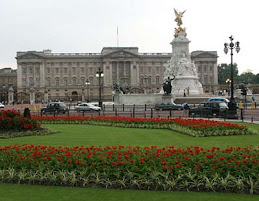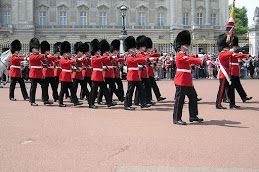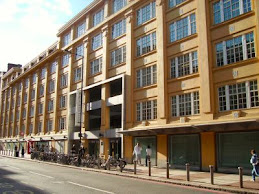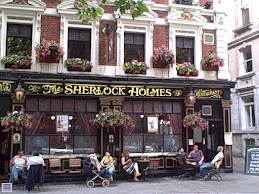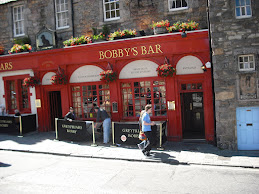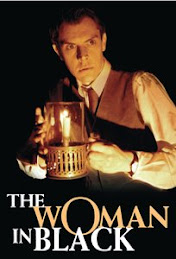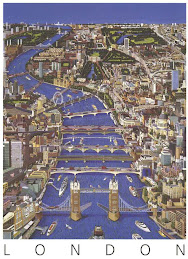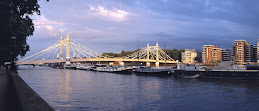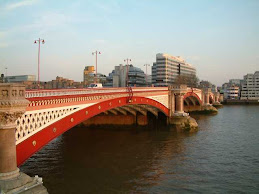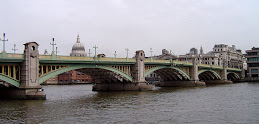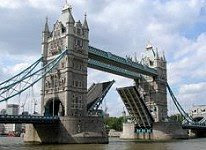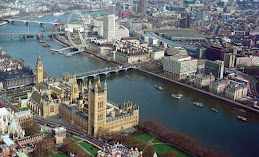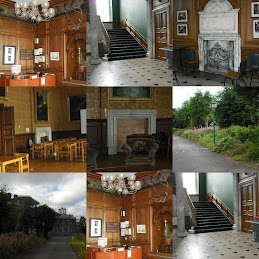
Starting the day with a Special Inside Tour by Mrs. McBryde:
Our first entrance into the National Archives of Scotland began with an introduction and tour of the facility and of the collection by the librarian, archivist and Education Officer, Mrs. Margaret McBryde. She informed us that her work was service related in working with the public, exhibitions, websites and other tasks.
History, Service and Operation of the Organization:
The National Archives of Scotland is a governmental agency that offers employment opportunities to civil servants and is funded by government archivists. As an Archives, the library is the keeper of the records of Scotland. The agency sits under the ministry and is headed by the Records of Scotland. Mrs. McBryde informed us that there is a good working relationship between agencies and there are valuable partnerships formed. The mission of the organization is to preserve, protect, and promote the preservation of national records. Included in this mission is to provide the best inclusive and accessible archives for the nation.
The Organization and the Staff:
There are over 160 library staff members at the National Archives of Scotland. Most of those numbers consist of Information Technology staff, with the inclusion of 30 to 40 archivists. The National Archives of Scotland (NAS)offers three separate buildings (Main Building, West Register House, and the Thomas Thomson House) in Edinburgh and operates five websites, headed by a Deputy Keeper. There are two main divisions of the National Archives to include: (1) Record Services Division; and the (2) Corporate Services Division. The Record Services Division includes the government, the court system, legal, private, and outreach services and records. The Corporate Services Division is over the accommodating services, finances, administration, information and communication technology, conservation services and reader services.
The Three Buildings:
The historic main building is the General Register House, built in 1274 and opened much later for the public in the 1780’s. Today, it is a public space for all patrons. The West Register House is a public search room for patrons. It also serves a purpose in storage for the collection. This house was opened in 1971. The Thomas Thomson House is the third building of the NAS, built and set up under the direction of Mr. Thomas Thomson to function as an Archives and offers various programs for the public. This building is also a public access area.
Organization of Records, Conservation and Digitization:

Mrs. McBryde stated that the items of the collection come in as “raw” in form and then inserted in the collection after initial conservation, sorting, weeding, cataloguing electronically, and boxing/labelling. We learned that all items in the archives collection is tagged in the building. If items are moved, the system must be updated right away to reflect the change. The items must then be returned their correct positions to minimize errors from occurring as much as possible.
When items are in their “Record Stage,” they are categorized. The “Conservation Department” is another department that dismantles the item, taking off the covers before digitization occurs. Our guide said that this is a very important and time consuming process that is very worthwhile in careful handling and preserving the items appropriately.
With much pride, Mrs. McBryde informed us that all national records can be accessed because of digitization of each item. This digitized copy is offered to locals in their own local electronic archives and is accessible locally, nationally and internationally. The standard for modern archives in which items must meet in British archives is called: BS5454.
Functions of Archives:
According to Mrs. McBryde, the main function of the archives is to select public records worthy of permanent preservation, acquire other list records, and to revert or transfer records to other more appropriate repositories. Another function is to preserve the original standards of all records. Also, to promote public access and increase access electronically by producing catalogues, exhibitions, and publications is another important function of the NAS. Other major functions of the Archives is to provide advice to owners and custodians of records, especially local authorities and the Scottish public authorities, disseminate information and facilitate access to such records. The National Archives of Scotland seeks to take the lead in the development of archives and records management practices in Scotland and deploy resources.
NAS Holdings:
There are over 70 kilometers (km) of records dating back from the 12th century. Some examples of these holdings are: State/Parliamentary papers; registers of Deeds and Sasines; Church records; Wills & Testaments; Taxation records; Valuation rolls; Family & Estate papers; Court & Legal records; Government records; Business records; and Railway records.
How do Patrons Access Records? Striving for Enhanced Service:
Patrons can access records through NAS “finding aids” such as: electronic; paper; and Website Catalogues. The NAS website as an online service to the public offers SCAN, Scottish Wills, and a self help guide to reading documents. The main website offers many relevant and helpful websites and links to additionally serve patrons. The online public access computer (OPAC) is searchable by person, place or catalogue. The OPAC was explained to be a bit confusing and extremely broad, so they are trying to better the system through an evaluation process by the offer of feedback from the public.
The NAS is also very compelled to increase public palaeography skills (handwriting). In creating an original, there are available programs taught in schools by NAS to enhance handwriting skills. The offer of a variety of resources, workshops, video conferencing, and publications is seen to be a value added service provided by NAS in the community.
Search Rooms: Historical Search Room & the West Search Room
We were told that once in the search rooms, one has to obtain a “reader ticket” and it is then that the patron can key in information into the electronic catalogues. The Historical Search Room opened in 1847, and has been offering patrons access to research materials. Only paper, pencils and laptops are allowed in these rooms. A patron can chat with a curator to see if they can help them with their research needs. It is a requirement that patrons present a driver’s licence and passport when needed in order to access materials. Interestingly, a reader ticket dually serves as a security pass once in the reading rooms at NAS!
The West Room offers patron searching of government documents. It was good to learn that there are no charges for any historical research! As I imagined, the legal and commercial searches are for a fee.
General Information:
For general information given to learn, Mrs. McBryde told our class that a “Keeper” is an Archivist or Librarian of good standing in the profession. We also learned that a fee for information services depended upon the search needs and purpose of the interview. Patrons are given two hour free access rights on the computer/Internet. It is a cost of 10 pounds per day thereafter. The library is presently offering a “Soft Launch” test which measures/evaluates the usage of the computer/Internet over a six week period to see how the system is handling its use. There is an Image Library being developed by NAS of all archival records that is currently being developed. It is an enormous project with the offer of a commercial web library for patrons.
More Developments at NAS:
The National Archives of Scotland is developing enhanced access to Scottish Wills from the time period 1500 to 1901. The Church of Scotland’s records are also being digitized currently. There is a new electronic ordering system in the search rooms in place presently and is being evaluated at this time. Another important development at NAS is the Registers Archive Conservation Project. Additionally, a “Virtual Volumes” is being offered if patrons need to know for example a reference number to order a copy of an item. The costs of the service ranges from 5 pence (p) to 2 pounds (lb). The electronic ordering system for patrons is a nice service for ordering a digitized copy of an item. There is the availability of features such as cropping. Patrons can also search the system by parish and volume. An issue with this electronic system is that it is virtually impossible currently to index all records because the collection is so large, and other issues are the time and labor involved in such an extensive project.
Adam Dome:
The last room to visit was a beautiful circular dome structure that is a new area that will soon offer broadened access to another reading room for patrons. It will offer an accessible collection there of a variety of books, registers and deeds. Currently, it is only open once per year to the public.
Websites of Relevance and Interest:
National Library of Scotland
National Archives of Scotland
Scottish Archive Network
The Official Goverment Source of Geneological Data for Scotland
Scottish Handwriting for Schools
Scotland Images Gateway
